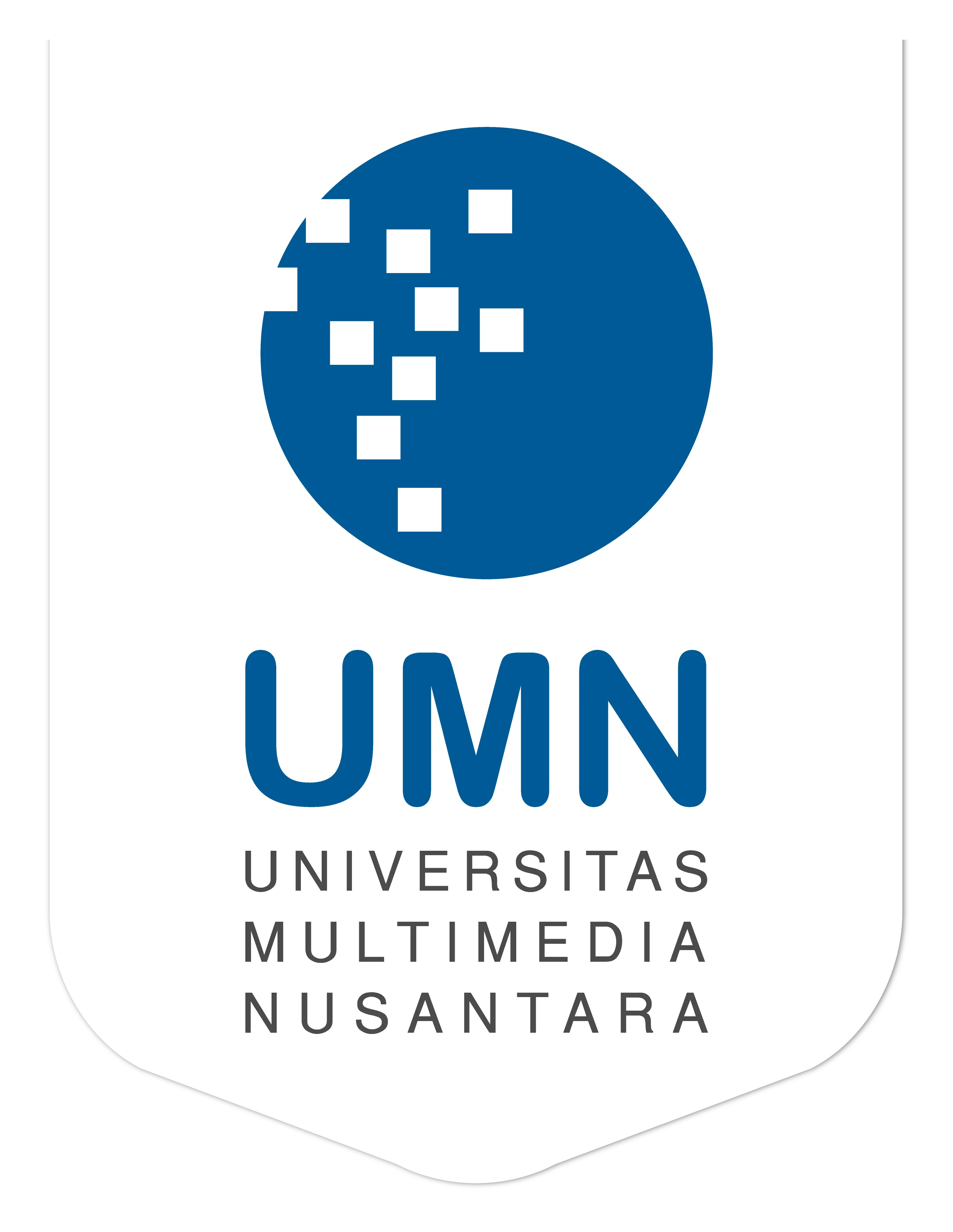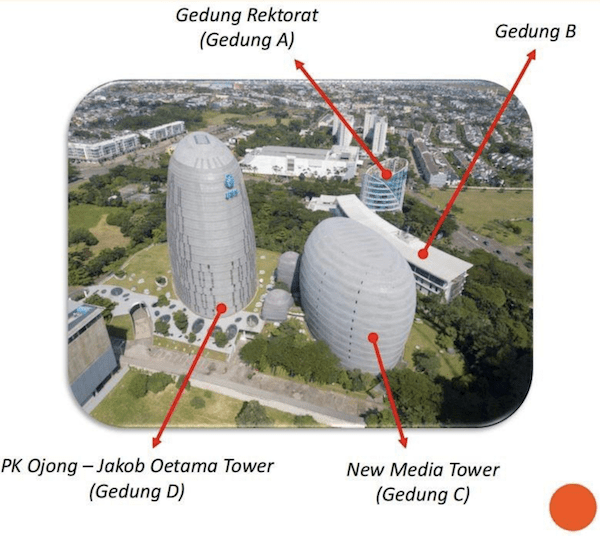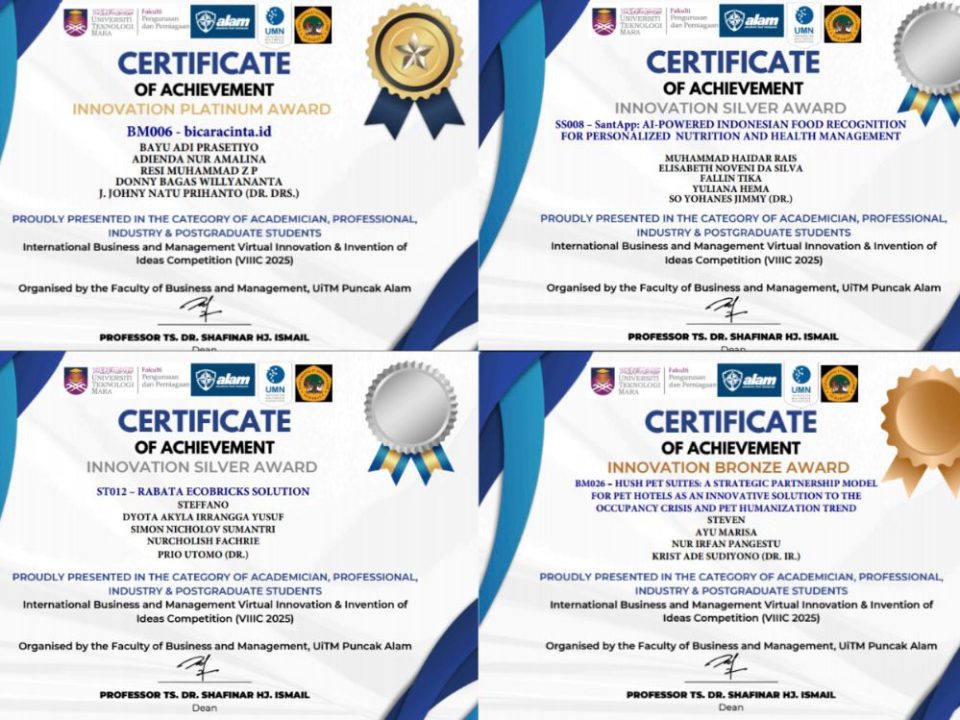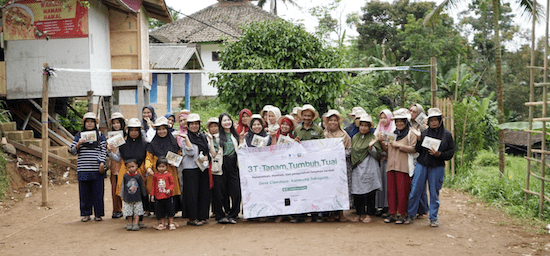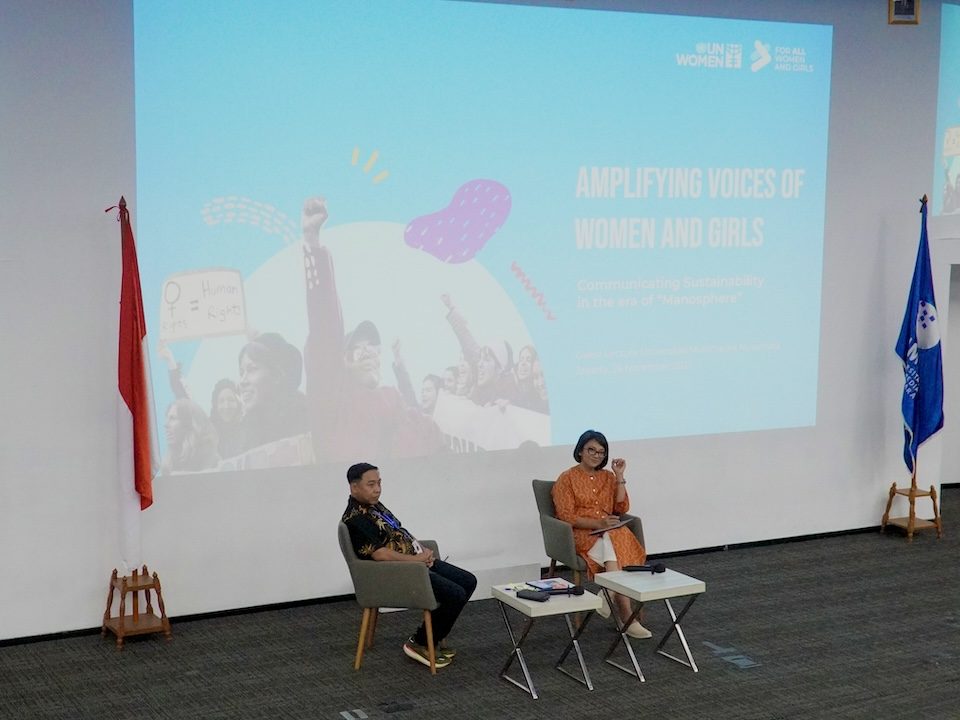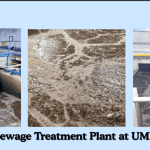
Ensuring Water Safety Through On-Site Treatment and Monitoring
August 27, 2024
UMN’s Commitment to Inclusivity Through the Recruitment of Underrepresented Groups
September 3, 2024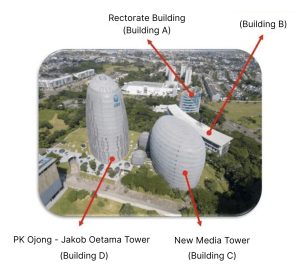
UMN Buildings (Doc. UMN)
Universitas Multimedia Nusantara (UMN) was designed from the ground up with energy efficiency and environmental friendliness in mind. Spanning 8 hectares with a total floor area of 99,500 square meters, the campus incorporates energy-saving principles right from the initial planning stages. The university applies both passive and active design strategies to minimize energy use while maximizing comfort and sustainability.
Passive Design Strategies: Nature as a Natural Cooler
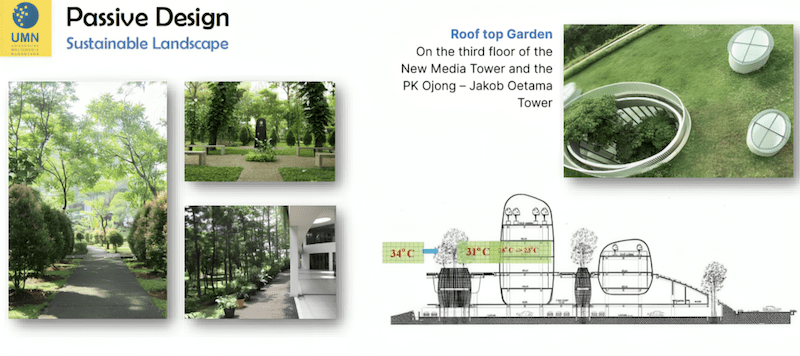
(Doc. UMN)
UMN’s passive design includes sustainable landscaping such as rooftop gardens on the third floor of the New Media Tower and the PK Ojong – Jakob Oetama Tower. These green spaces not only enhance aesthetic appeal but also improve the microclimate around the buildings. Strategically planted trees reduce the incoming air temperature from 34°C to 31°C before it enters the buildings, and combined with double facades, the indoor temperature can be lowered to approximately 28°C, reducing the need for artificial cooling. The rooftop gardens also serve as valuable green open spaces that contribute to energy savings.
A Campus Rich in Green Space for Natural Cooling and Water Absorption
UMN dedicates 80 to 90 percent of its land to open space. Out of the total campus area, about 19,431 square meters are covered with forest vegetation and 26,260 square meters with planted vegetation. Additionally, 25,510 square meters are designated for water absorption beyond forested and planted areas. This extensive greenery supports natural cooling and helps manage water runoff, reducing reliance on energy-intensive artificial climate control and drainage systems.
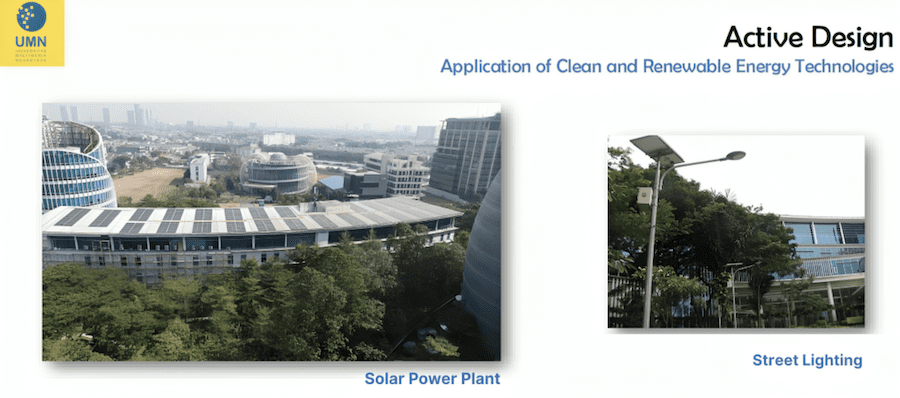
(Doc. UMN)
Active Design Strategies
Solar-Powered Street Lighting: Clean Energy in Action
UMN has installed six solar-powered streetlights at the main campus entrance. Each unit features a 150 Wp solar panel and a 40 W LED lamp, which significantly reduces dependency on conventional electricity for outdoor lighting. This switch to solar energy not only lowers the university’s carbon footprint but also serves as a practical example of adopting clean and renewable energy sources on campus.
Solar Power Plant Installation for Ongoing Energy Efficiency
Further advancing its sustainability goals, UMN operates a solar power plant consisting of 376 solar panel units. This large-scale installation continuously supplies clean electricity to the campus, reducing overall energy consumption from non-renewable sources. Solar power contributes to lowering greenhouse gas emissions and supports the university’s long-term plan to create a greener, more energy-efficient campus environment.
Water Recycling: Reducing Energy Use through Wastewater Management
UMN also integrates water management into its energy efficiency plan by recycling greywater. Wastewater from the New Media Tower and PK Ojong – Jakob Oetama Tower undergoes treatment through a Sewage Treatment Plant (STP) using aerobic bacteria that break down impurities. After treatment, the water is further processed in a Water Treatment Plant (WTP) and reused 100% for irrigation, toilet flushing, and cooling towers in the air conditioning system. This recycling reduces the need for freshwater pumping and heating, ultimately decreasing energy consumption across campus operations.
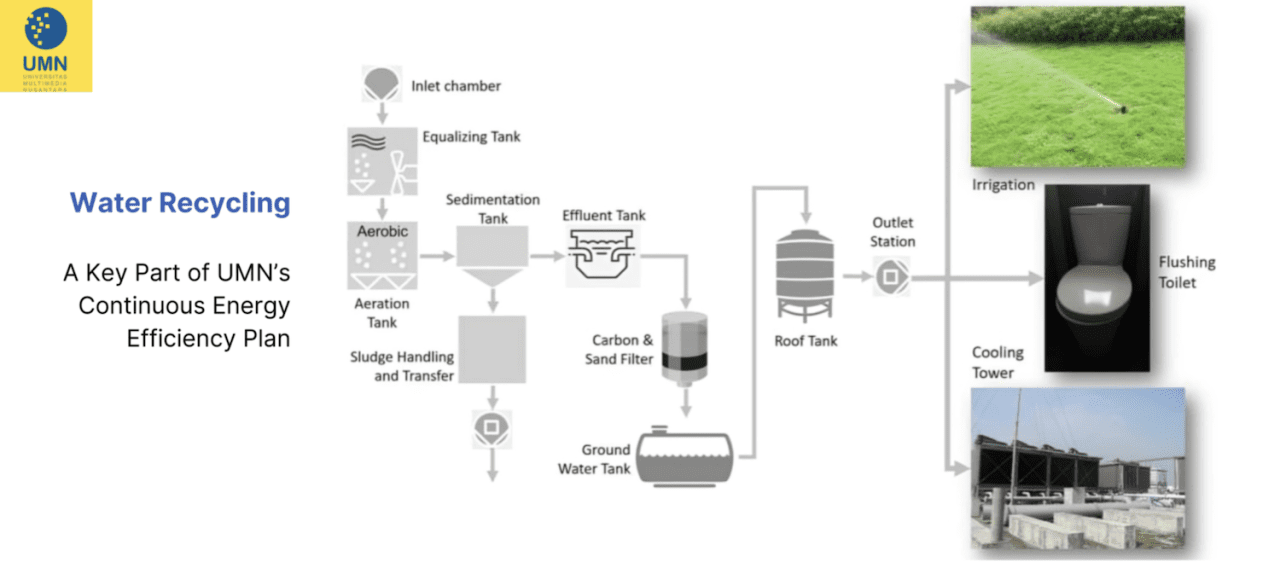
(Doc. UMN)
